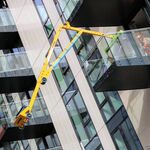robmausser
Senior Member
They specifically looked at all people who travel from Orangeville to Toronto, and using the TTS, determined this to be 100 across all modes. This is not even the seated capacity of 1 BiLevel. Even if the population of Orangeville doubled, and 10% of the population used it, that is still only 6k people, which at a cost of $400m, is over $60k per rider. If you really wanted improved regional connectivity for Orangeville, what you'd push for is for Brampton to have a Highway 10 BRT, from Steeles to King Street it'd run in dedicated lanes, and from King Street to Orangeville, it'd run in paved shoulders, that might be justifiable.
I can guarantee that way more than 100 people drive from Orangeville to Toronto for work. (pre pandemic)
If you still have lost the plot then you won't understand my previous message nor will you ever.






